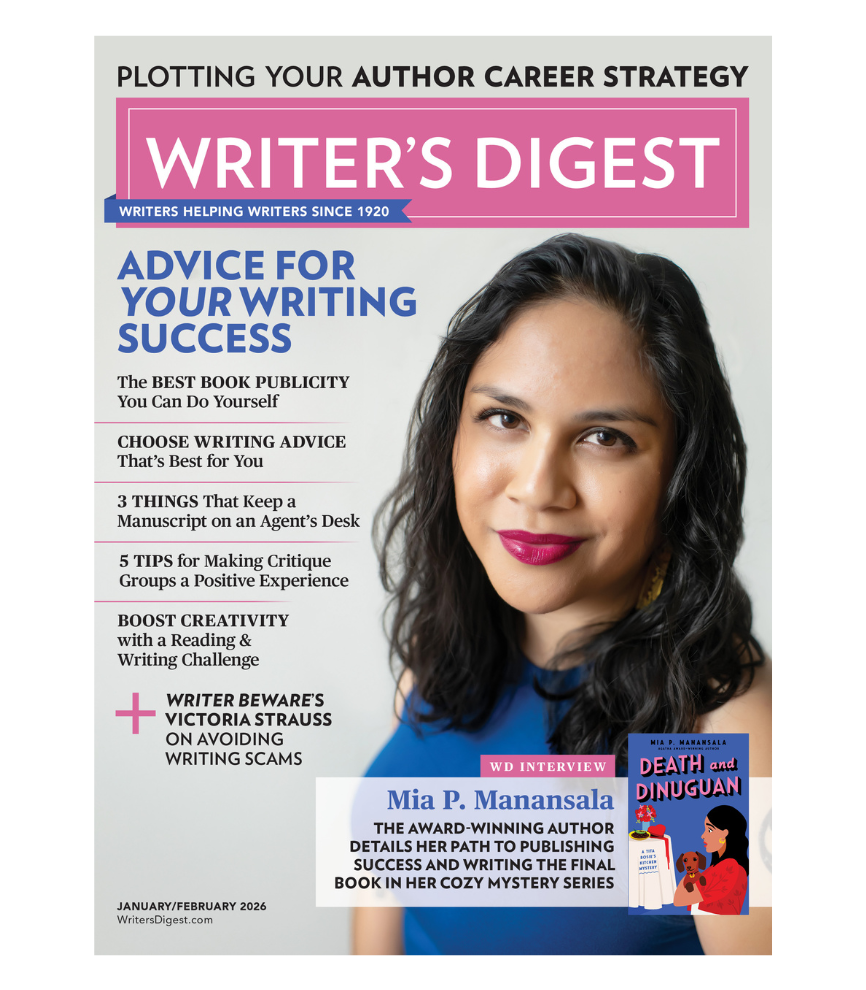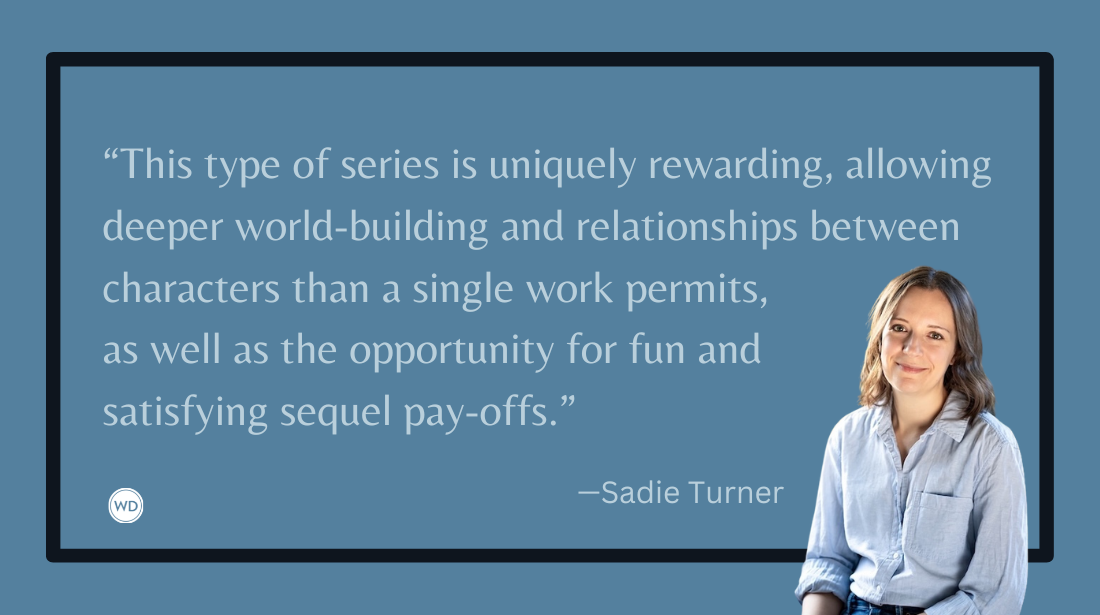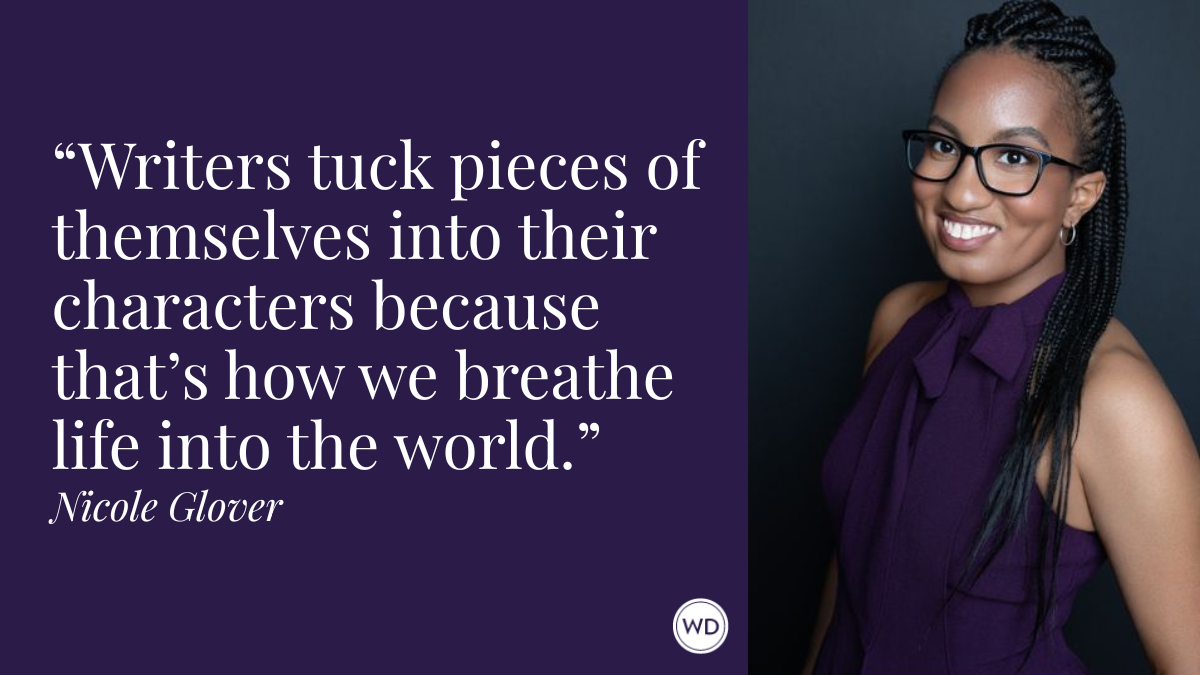Finding Magic at the Intersection of Reality and Fantasy in Fiction
Whether it’s called “speculative historical fiction” or “historical fantasy,” author Olesya Salnikova Gilmore shares her thoughts on finding magic at the intersection of reality and fantasy in fiction.
I write speculative historical fiction—at least, that is the fancier-sounding term I use. Quite simply, I’m a historical fantasy author.
When “normal” people, i.e., non-publishing people, ask me what I write, I become a rambling, bumbling mess. I say something along the lines of “historical fiction,” then in an undertone, a little scattered, “and fantasy” or “with magic” because that’s when most people lose interest or assume questioning, confused looks.
The truth is, historical fantasy, while popular, is not talked about a whole lot in mainstream publishing or otherwise. At least, not in my experience.
What Is Historical Fantasy?
First, what is it? Historical fantasy is a sub-genre of fantasy that takes place in another time, sometimes in another place and in the context of another culture. It can include elements of high fantasy (mythology, fairy tales, or other), science fiction, and horror, as well as magical realism or a dash of magic.
The amount of fantasy and history used is a balancing act, one deeply personal to the author. Books like Outlander are largely historical with just a sprinkling of magic. Circe, The Bear and the Nightingale, The City of Brass, or The Night Circus are largely fantastical with a historical background.
I signed my first publishing contract in 2020, and after writing and shepherding two novels onto bookshelves, I can tell you being a historical fiction author is like being an immigrant, who I also am. I’ve lived in the United States for 30 years, yet sometimes, I feel I don’t belong to either culture. The same is true as a (new) historical fantasy author, especially when it comes to finding readers, obtaining reviews, and other parts of what I call “the best and worst part of the process,” i.e., “what is completely outside your control but what you freak out about the most.”
For historical fiction readers, I am oftentimes too fantasy-leaning. My fiction has seen gods and goddesses, witches, ghosts, the underworld, blood rituals, and the like. On the other end of the spectrum, my fiction tends to be too historical for fantasy readers, which leads to comments in reviews on slow pacing, not enough action, too much history, the list goes on.
How to Balance the Fantasy and Historical Fiction
I have learned the answer is to WRITE FOR YOURSELF—with the market in mind, of course. The sad reality is you won’t make everyone happy. You can start with yourself, the writer, by writing fiction you love, that fascinates you, and that you can genuinely say you are excited to work on every time you sit at your desk.
I am most happy writing fiction set in the real world with real cultures, people, and historical situations. As a reader, I never really read a lot of high fantasy, mostly gravitating to the likes of Alice Hoffman, Deborah Harkness, Neil Gaiman, and Madeline Miller, though I did read a lot of fairy tales and classics like Narnia growing up and loved those. Gothic fiction, too, starting with classics such as Nikolai Gogol, the Bronte sisters, Daphne du Maurier, Frankenstein, Dracula, and many others, to modern gothic writers like Sarah Waters, Silvia Moreno-Garcia, T. Kingfisher, Wendy Webb, Paulette Kennedy, and others. I love a little magic, a little of the supernatural or gothic, that intersection of fantasy and reality.
This is why I love using my background and culture in my writing, little pieces of me, my history and experiences, allowing me to explore who I am and where I came from. Placing a story in a real historical time period is an added challenge, which I love, being a naturally curious person and a lawyer by training. History is a puzzle we writers piece together in fiction.
In my first novel, The Witch and the Tsar, I set my story about the maligned Slavic witch, Baba Yaga, in the real 16th century medieval Russia, against the backdrop of the reign of the real Tsar Ivan the Terrible. I incorporated into the novel not only Russian history, but Slavic folklore and mythology. Similarly, my second novel, The Haunting of Moscow House, is set in the real 1921 Moscow, just after the Russian Revolution, and incorporates Slavic folklore and gothic elements.
Check out Olesya Salnikova Gilmore's The Haunting of Moscow House here:
(WD uses affiliate links)
Finding the Heart of the Story
For both stories, the characters came first. Baba Yaga for the first, and for the second, two sisters of the once aristocratic Sheremetev family, who lived in their ancestral house in post-revolutionary Moscow alongside their Soviet class enemies. A historical or mythological character, a unique concept, or a particular historical situation usually sparks my interest and gets my juices flowing in racing to figure out what kind of story I want to tell.
The time period in Witch came from my fascination with Ivan the Terrible; the one in Moscow House was a given after I read about the real-life sisters that inspired my own sisters in the novel.
When the Bolsheviks seized power from the Tsar during the Revolution, millions of people died, and many of Russia’s longstanding aristocratic families fled the country. Despite the uncertainty of their future, the oppression and persecution that followed, some, like the real-life sisters, decided to stay, determined to preserve their noble and cultural heritage. Some of them even worked for the American Relief Administration (ARA) that arrived in Russia in 1921 to help with the famine following the long years of war and civil unrest.
Unlike in Witch, which involved many of the major historical players during the reign of Tsar Ivan relevant to my storyline, only a few real-life historical characters are mentioned and/or make an appearance in the pages of Moscow House. I knew the focus of my story would be the sisters and their family, and I created fictional versions inspired by the real people and family. I wanted to be respectful of the Sheremetev descendants.
The fictional story then takes center stage, and is admittedly a long, arduous, sometimes frustrating process of self-discovery, revisions, and changing my mind. Going into it, I usually have an idea of the kind of story I want to tell—based on the characters, time period, and historical situation I’ve by this time thought about at length and researched.
Witch was more straight-forward, in that it focused on Yaga’s fight against Tsar Ivan in the context of the key events of his reign. Moscow House, on the other hand, started as more of a concept. I wanted it to be about two once aristocratic sisters trapped in a house that won’t let the past die. And I wanted it to be a ghost story. Then I started to understand that on top of this, I needed suspense, family secrets, a murky past the sisters race to uncover to learn what really happened to their dead family during the Revolution. I also wanted to feature the ARA, which ended up providing a nice contrast between the sisters’ past and present.
Layering on the Speculative Elements
After I make the initial decisions on story, the layering on of the speculative elements happens block by block, just like the plot and structure. Unlike in Witch, which was heavy on fantasy and mythology, I wanted something a little more subtle for Moscow House, the balance between fantasy and historical fiction definitely tipping in favor of historical.
Since I knew this story would be about a haunted house, I incorporated Slavic folklore on the home and some of my favorite gothic elements, especially from the Slavic gothic genre popularized by the likes of Gogol and Bulgakov. I layered on these folkloric and gothic elements through the house and the ghosts that became their own characters in the story.
Incorporating the supernatural is not only fun; it allows me to look at the real world and its issues through a lens that is a little more removed from our reality. It allows freedom of expression and thought, as well as the complexity I crave—not to mention endless fascination to imagine people in a different time and place, with a different but familiar culture I can explore endlessly.
Next time someone asks, I think I will tell them without hesitation—I am a historical fantasy author. Because one cannot exist for me without the other, and I am proud of it. Maybe you’ll give historical fantasy a try, too. Maybe, just like me, you’ll find magic in it and discover you love it.
Olesya Salnikova Gilmore is the author of The Witch and the Tsar, a stunning historical fantasy novel that established her as a writer skilled in combining the supernatural with the real to create unforgettable stories that reflect her Russian heritage. Her debut was praised by outlets like Paste, Tor, BookBub, and more for its rich female characters, fully-realized settings, and striking voice. Her newest, a highly anticipated turn to gothic horror, displays all the skills she’s known for but with a deliciously thrilling twist. Set in post-revolutionary Moscow, The Haunting of Moscow House follows two once aristocratic sisters as they race to uncover the secrets buried in their family’s now haunted house. (Photo credit: Nicola Levine Photography)









